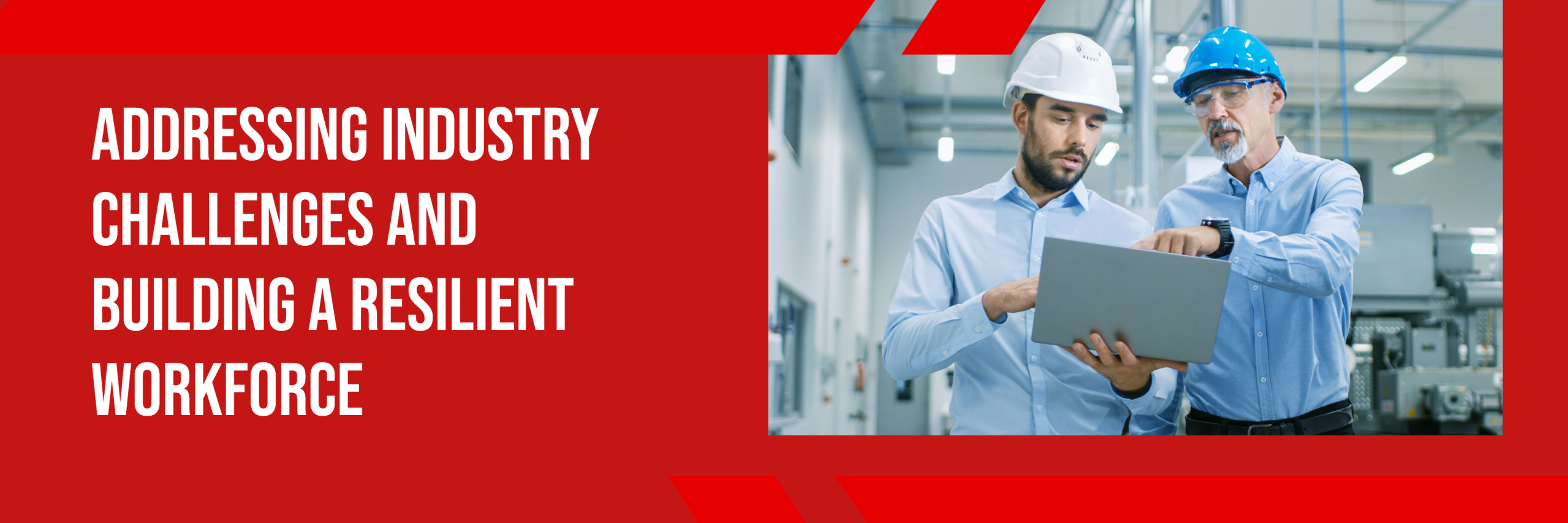
Addressing Industry Challenges and Building a Resilient Workforce
The manufacturing industry had a very strong 2022 building on the momentum it gained emerging from the pandemic, and surpassing expectations from the prior two years. While overall demand and production capacity have hit recent highs, there are indications that the near-term outlook may not be as bright. Supply chain issues, labor shortages, and an uncertain economic environment are all challenging the industry’s growth momentum.
LABOR SHORTAGES
The manufacturing industry is facing a labor shortage, as there are not enough skilled workers to fill open positions. Despite a record level of new hires, job openings in the industry are still hovering near all-time highs. This is due to a number of factors, including continued retirement of baby boomers, the lack of interest in manufacturing careers among young people, and the high turnover rate in the industry. Voluntary separations continue to outnumber layoffs resulting in substantial workforce churn. This workforce shortage has contributed to reducing operational efficiency and margins. Manufacturers need to explore all avenues possible to strengthen their talent retention strategy.
SUPPLY CHAIN
The persistent shortage of critical materials and the ongoing supply chain disruptions continue to present the biggest uncertainty for the industry. Manufacturers are mitigating these risks with increased utilization of digital technology, building local capacity, and moving from just-in-time sourcing to create redundancy in the supply chain.
COMPETITION FROM FOREIGN MANUFACTURERS
Foreign manufacturers are often able to produce products at a lower cost than U.S. manufacturers, due to lower labor costs and government subsidies.
TECHNOLOGY DISRUPTION
Manufacturers have increased their investment in technology over the past few years and are hungry to adapt and utilize emerging technologies. Those companies who invested in technology in past years have shown greater resilience, as did those that ramped up their digitalization during the pandemic. Companies will need to continue to invest in advanced manufacturing technologies to sustain their viability.
These challenges are putting pressure on manufacturing companies to find new ways to operate more efficiently and effectively. Some of the ways that manufacturing companies are addressing these challenges include:
UPSKILLING AND RESKILLING EMPLOYEES
Employers are developing a growing understanding of the importance of skills-based training and recruitment. Manufacturing companies need to continue to upskill and reskill their employees to meet the demands of the changing workforce.
INVESTING IN AUTOMATION
Manufacturers continue to work toward smart factory transformations to keep them competitive. Many manufacturers are making investments in laying the technology foundation for their smart factories. One in five manufacturers is already experimenting with underlying solutions or actively developing a metaverse platform for their products and services.
REDUCING WASTE
Tech-savvy companies are using analytics to work at optimum efficiency. Downtime is minimized thanks to predictive maintenance, where spare parts for repairs can automatically be dispatched to locations where the system knows they will be needed.
INCREASING INNOVATION
With the advent of the Industrial Internet of Things, connecting machines to carry out complex tasks without requiring human interaction, technology can provide solutions to many of the challenges facing industry.
INVEST IN RESHORING
Manufacturing companies are investing in “reshoring” – bringing imported goods or materials back to domestic production. Countries in which labor remains inexpensive lack the infrastructure to support complex manufacturing operations.
In the face of these challenges, manufacturers are also presented with tremendous opportunities for growth, innovation, and transformation. By innovation, digitization, automation, and workforce development initiatives, companies can position themselves as leaders in the evolving manufacturing landscape.
Want to know more about interviewing or how we help our IT and Engineering professionals achieve their career goals? Let’s schedule a brief call so you can learn more about how we can help you achieve your goals!
Connect with us on LinkedIn: Whitaker IT Whitaker Technical
